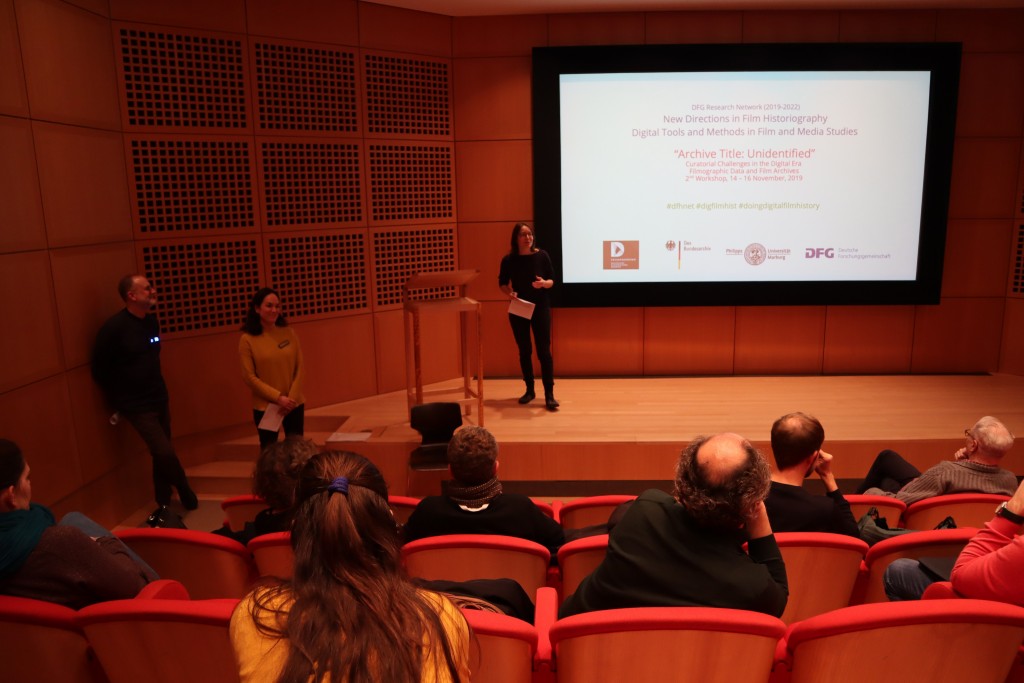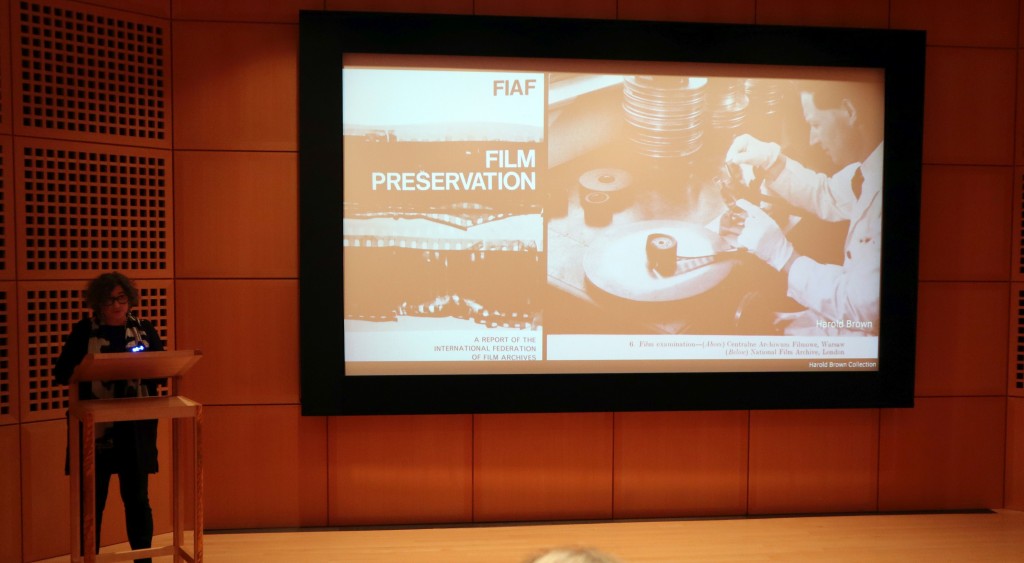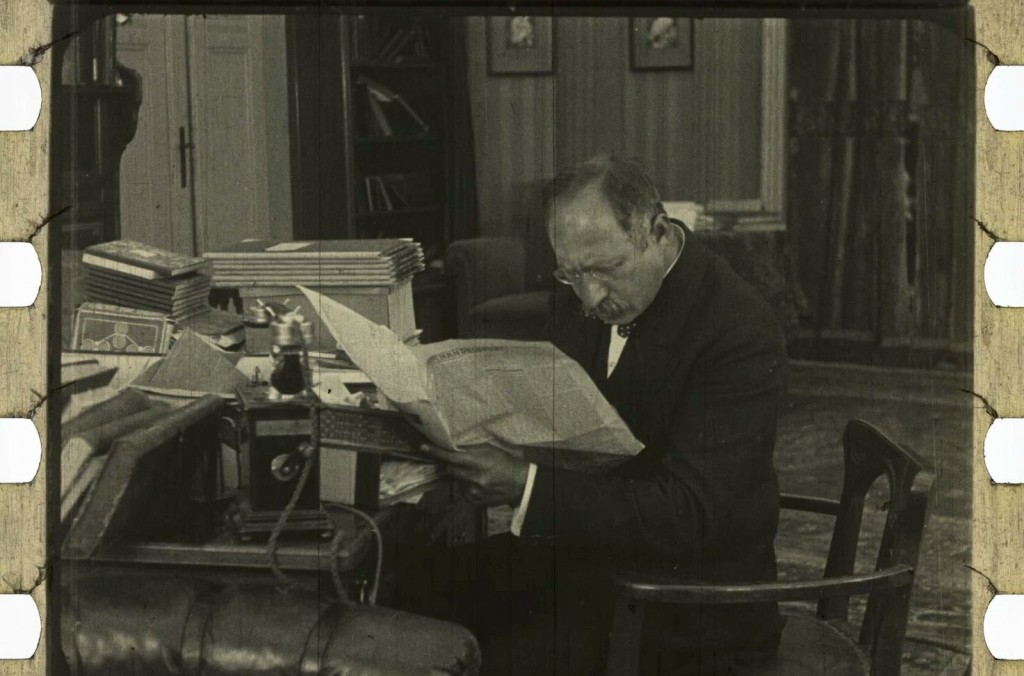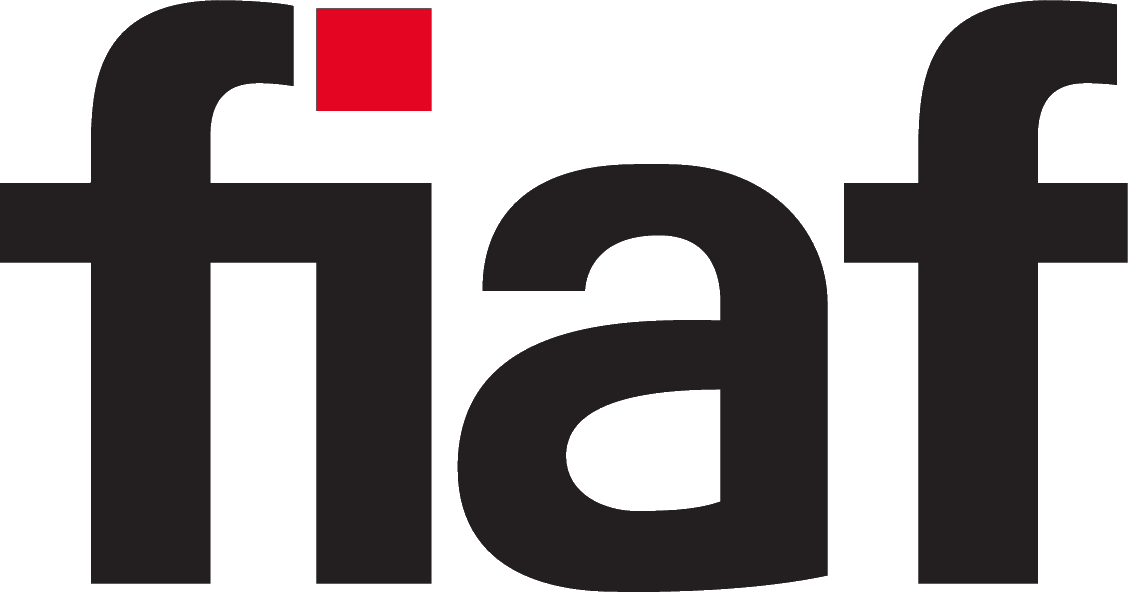“Archive Title: Unidentified”
Screening and Identifying Unidentified Material from the Bundesarchiv's Collection
Date: Saturday, 16th November 2019, 10:30 am to 12:30 pm
Location: Auditorium of the Pei-Bau in the German Historic Museum
Organised by Adelheid Heftberger and Dirk Förstner (both Bundesarchiv, Berlin)

From left to right: Dirk Förstner, Sarah Mai-Dang, Adelheid Heftberger (photo courtesy: Tim van der Hijden)
The event “Archive Title: Unidentified” was linked to the meeting of the DFG Network “New Directions in Film Historiography: Digital Tools and Methods in Film and Media Studies” (https://gepris.dfg.de/gepris/projekt/423266924?language=en). The network focuses less on digital cinema or new media but rather on film historiographic data, digital methods, tools, and platforms which are used in the humanities. However, research outcomes and discourses on how we define and even produce historic sources play an important role, particularly when it comes to archiving and presentation practices.The network wishes to contribute to ongoing discussions about the relationship between the digital humanities and film/media studies.
Unidentified films are usually out of the focus of film archives: they rarely get actively preserved and they almost never get screened. Film archives know this only too well and try to find manpower and money to work on these collections, but film identification is a job which requires highly skilled experts who are not always so easy to find.
Integrating the wider community in order to get clues about dating or even identifying their material is not a new idea: projects like “LOST FILMS” (https://www.lost-films.eu/) by the Deutsche Kinemathek, or the yearly event “Mostly Lost” (https://www.loc.gov/item/prn-18-050/) at Library of Congress aim at colleagues from other archives, film historians and film lovers likewise.
Many times the material in question cannot be screened as it is too fragile and usually not prepared for cinema projectors. Digitisation helps us to overcome this technical hurdle and makes it easier to show the various “Bits&Pieces” of unidentified film fragments from our collections (with a nod to the now legendary compilation series by the EYE Filmmuseum).
Structure
The organisers didn't have a traditional screening in mind, where we sit and enjoy the aesthetic of rare nitrate films/fragments. Rather we wanted to engage the expert audience into a dialogue where ideas and clues are expressed on the spot and discussed immediately. Even if we would not be able to positively identify the films being presented, we could at least collect scraps of vital information which might help us to identify the film at some future date.
We had reached out to film historians, film scholars, film professionals and film archivists from the Berlin area and invited them to come and join us on a rainy Saturday morning for this "film quiz". About 40 people came and contributed with their knowledge and expertise while enjoying the colourful images from the silent era.

Camille Blot-Wellens (photo courtesy: Tim van der Hijden)
First, we were pleased to welcome Camille Blot-Wellens for a presentation on Harold Brown and his pionering work on film identification, and a preview of the new, expanded edition of Harold Browns seminal Physical Characteristics of Early Films as Aids to Identification to be published by FIAF later this year.
After this well received talk, we presented a selection of around 50 minutes worth of unidentified and recently digitized material from the nitrate collection of the Bundesarchiv. Dirk Förstner provided some contextual information concerning the provenance of the prints and the state of their preservation, while Adelheid Heftberger tried to engage the audience in a lively discussion and took note of the comments made by the participants.
Results
From the ten film fragements we screened, we will be able to identify at least 5 films based on suggestions and valuable hints for cast and setting. For the rest we at least received useful suggestions concerning the shooting locations.
The idea and goal from the Bundesarchiv's perspective was to facilitate and stimulate discussion and exchange about silent film between film archivists and film scholars as well as to reach out to the wider community with a comparatively unusual screening programme of silent film fragments. Not least due to the wonderful musical accompaniment by Berlin-based accordeonist Daniel Stetich (https://danielstetich.com/music), the screening could be enjoyed at face value, without the need to actively participate in the discussion. The feedback we received after the screening gives us the impression that the participants would warmly welcome similar events in future.

Unidentified film, source Bundesarchiv
We would once again like to extend our thanks to Daniel Stetich for the musical accompaniment, to Jörg Frieß from the Zeughauskino for agreeing to host the event, to Sarah Mai-Dang for providing financial support via the DFG network, and to Oliver Hanley for preparing the video files for the screening.
Adelheid Heftberger, 22.11.2019





